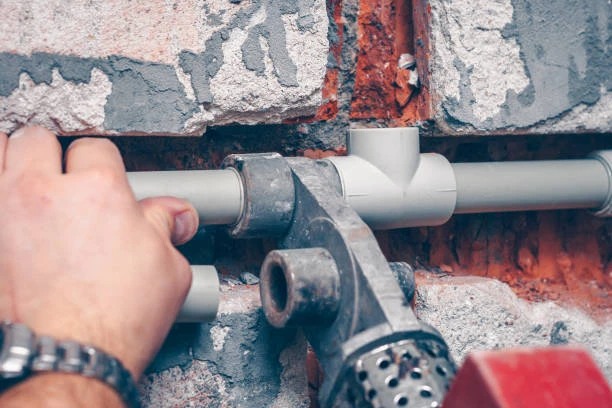Introduction
The PPR Pipe market is on the verge of significant growth, driven by various factors that highlight the increasing demand for high-quality piping solutions. As industries and consumers seek reliable, durable, and environmentally friendly materials, PPR pipes are becoming a preferred choice. This article delves into the growth prospects for PPR pipe manufacturers and explores the dynamics influencing this expanding market.
What is PPR Pipe?
Definition and Composition
PPR, or Polypropylene Random Copolymer, pipes are made from a thermoplastic polymer known for its strength and resilience. They are characterized by their lightweight nature and resistance to corrosion and scaling, making them ideal for a variety of plumbing and industrial applications.
Common Applications
PPR pipes are widely used in:
- Residential plumbing systems
- Industrial water supply
- Heating systems
- Agricultural irrigation
Market Overview
Current Market Size
The global PPR pipe market is currently valued at approximately $2.5 billion. With growing urbanization and infrastructure development, this market is expected to expand rapidly.
Growth Projections
By 2031, the market is projected to reach around $4.2 billion, indicating a compound annual growth rate (CAGR) of about 7% during this period. This growth presents lucrative opportunities for manufacturers.
Factors Driving Growth
Rising Demand in Construction
The construction industry is witnessing a boom, particularly in emerging markets. As new residential and commercial projects rise, the demand for reliable plumbing solutions like PPR pipes is increasing.
Increasing Focus on Sustainable Solutions
As environmental concerns grow, many industries are shifting towards sustainable materials. PPR pipes, being recyclable and less harmful to the environment, fit perfectly into this trend.
Technological Advancements
Innovations in manufacturing techniques and materials are enhancing the quality and performance of PPR pipes. These advancements are driving adoption across various sectors.

Key Players in the PPR Pipe Market
Major Manufacturers
Leading companies in the PPR pipe market include:
- China Lesso
- Wavin
- Georg Fischer
- Aquatherm
- SABIC
Competitive Landscape
These manufacturers are investing in research and development to improve product offerings and gain competitive advantages in the growing market.
Regional Insights
North America
The North American market is expanding due to increased residential construction and renovation activities. PPR pipes are gaining traction as a reliable alternative to traditional piping materials.
Europe
In Europe, stringent regulations regarding water quality and environmental sustainability are driving the demand for PPR pipes. The market here is expect to grow steadily.
Asia-Pacific
The Asia-Pacific region, particularly countries like China and India, is witnessing the highest growth rate. Rapid urbanization and infrastructural investments are key factors contributing to this trend.
Emerging Markets
Emerging markets in Africa and Latin America are also beginning to adopt PPR pipes, driven by investments in infrastructure and a focus on improving water supply systems.
Challenges Facing PPR Pipe Manufacturers
Raw Material Costs
Fluctuations in the prices of polypropylene and other raw materials can impact manufacturing costs and profit margins for PPR pipe producers.
Competition from Alternative Materials
PPR pipes face competition from PVC and metal pipes, which may be favore in certain applications due to establishe market presence and lower initial costs.
Future Trends in PPR Pipe Manufacturing
Innovations and Product Development
Manufacturers are exploring new technologies to enhance the performance and applications of PPR pipes. Innovations such as fiber-reinforced PPR pipes are gaining popularity for specific uses.
Sustainability Initiatives
As sustainability becomes a priority for many industries, PPR pipe manufacturers are increasingly focusing on eco-friendly practices and materials, which will likely drive market growth.
Conclusion
The future looks promising for PPR Pipe manufacturers, with substantial growth opportunities on the horizon. The combination of rising demand in construction, a shift towards sustainable solutions, and technological advancements will play a crucial role in shaping the market. By adapting to these trends, manufacturers can position themselves for success in the evolving landscape.
As PPR pipe manufacturers navigate this dynamic landscape, collaboration with industry stakeholders, including builders, engineers, and environmental organizations, will be essential. By fostering partnerships and engaging in research and development, companies can innovate their product lines and meet the diverse needs of various sectors. Additionally, investing in marketing strategies that highlight the benefits of PPR pipes—such as their durability, cost-effectiveness, and eco-friendliness—will further enhance market visibility.
Furthermore, as regulations around sustainability tighten globally, manufacturers that prioritize eco-conscious practices and materials will likely gain a competitive edge. Emphasizing the lifecycle benefits of PPR pipes, from production to recycling, will resonate with environmentally aware consumers and businesses alike. Ultimately, those who proactively embrace these trends and commit to continuous improvement will thrive, ensuring a bright future for the PPR pipe industry.
FAQs
What are PPR pipes used for?
PPR pipes are commonly use in plumbing, heating systems, and industrial water supply applications.
How do PPR pipes compare to other types of pipes?
PPR pipes are more durable and resistant to corrosion compared to PVC and metal pipes, making them a preferred choice for many applications.
What is driving the demand for PPR pipes?
The demand for PPR pipes is driven by the booming construction industry, a focus on sustainability, and technological advancements.
How long do PPR pipes last?
PPR pipes can last over 50 years with proper installation and maintenance.
Are PPR pipes environmentally friendly?
Yes, PPR pipes are recyclable and have a lower environmental impact compared to some traditional materials, making them an eco-friendly option.


















